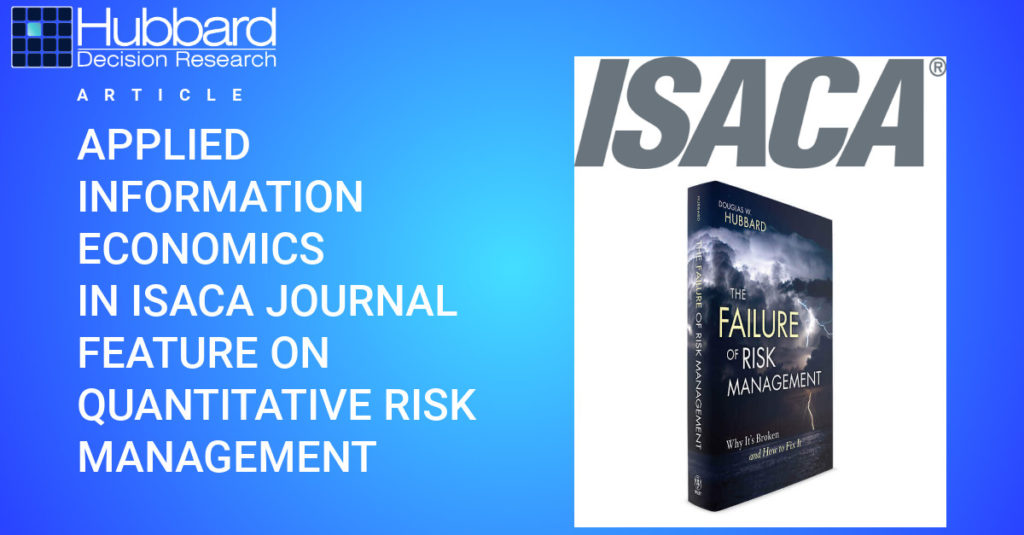Applied Information Economics in ISACA Journal Feature on Quantitative Risk Management

Risk management methodology, until very recently, was based mostly on pseudo-quantitative tools like risk matrices. The use of these tools has actually introduced more error into decision-making than they removed, as research has shown, and organizations are steadily coming around to more scientific quantitative methods – like Applied Information Economics (AIE). AIE is prominently cited in a new piece in the ISACA Journal, the publication of ISACA, a nonprofit, independent association that advocates for professionals involved in information security, assurance, risk management and governance.
The feature piece doesn’t hide the lede. The author says, in the opening paragraph, what Doug has been preaching for years: that “rick matrices do not really work. Worse, they lead to a false sense of security.” This was one of the main themes Doug talks about in The Failure of Risk Management, the second edition of which that is due for publication this year. The article sums up several of the main reasons Doug and others have given as to why risk matrices don’t work, ranging from lacking clear definitions to a failure to assign meaningful probabilities and cognitive biases that lead to poor assessments of probability and risk.
After moving through explanations of various aspects of effective risk models – i.e. tools like decomposition, Monte Carlo simulations, and the like – the author of the piece concludes with a simple statement that sums up the gist of what Applied Information Economics is designed to do: “There are better alternatives to risk matrices, and, with a little time and effort, it is possible to manage risk using terminology and methods that everyone can, at least intuitively, understand.”
The entire piece can be found here. For an introduction into AIE and how our methods are based on sound scientific research and offer measurable improvement over other systems, check out our Intro to Applied Information Economics webinar.

